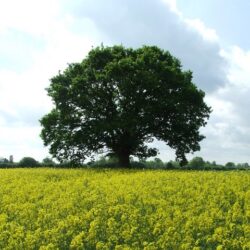| Source (Judeo-Arabic, Hebrew) | Translation (English) | Translation (Hebrew) |
|---|---|---|
|
|
As the prayer leader tears the middle matza into the shape of a vav, they recite:
|
|
|
הָאכְּדָּא קְצִס ﭏַלָּה לְבְּחַָאר עַלָא תְּנַעָאשׁ טְרִיק חִין
כִׄרְגׅוּ אַגְׅדּוּדְּנָא וְלָאד יִשְׂרָאֵל מִן מְצַָאר עַלָא יֵד סִידְּנָא וְנַבִּינָא וְשָׁרִיפְׄנָא מוּסָה בִּן־עַמְרָם עַלֵיהִ אַסְּלָאם וְרְצָׄא כִּיף פַׄכְּהוּם מִן־הַָאדָאךְּ שִׁעְבּוּד׃ הַָאכְּדָּא יְפֻׄכְּנָא מִן־הָאד לְגָּלוּת לְמַעַן שְׁמוֹ הַגָּדוֹל וְהַנּוֹרָא וְשָׁבוּ בָּנִים לִגְבוּלָם אָמֵן כֵּן יְהִי רָצוֹן׃ |
Thus Allah tore the sea into twelve paths[1] Find, Pirkei d’Rebbi Eliezer ch. 42, Avot d’Rav Natan 33:2, Midrash Tehillim 114, Targum Pseudo-Yonatan to Shemos 14:21 and Targum Pseudo-Yonatan Devarim 1:1. –ANV —
when our ancestors the children of Israel went out from Egypt, by the hand of our master and prophet and noble Moses son of Amram, peace be upon him — and desired their freeing from that slavery; thus THEY will free us from this exile, for the sake of THEIR great and awesome name, and the children will return to their borders, amen, thus may it be willed. |
אָז קָרַע יהוה אֶת־הַיָּם לִשְׁנֵים עָשָׂר שְׁבִילִים
בִּיצִיאַת אֲבוֹתֵֽינוּ בְּנֵי יִשְׂרָאֵל מִמִּצְרַֽיִם עַל יַד אֲדוֹנֵֽנוּ וּנְבִיאֵֽנוּ וַאֲצִילֵֽנוּ מֹשֶׁה בֶּן־עַמְרָם עָלָיו הַשָּׁלוֹם וְרָצָה בִּפְדוּתָם מֵהוּא הַשִּׁעְבּוּד׃ כָּךְ יִפְדֶֽנּוּ מִזֹּאת הַגָּלוּת לְמַֽעַן שְׁמוֹ הַגָּדוֹל וְהַנּוֹרָא וְשָֽׁבוּ בָּנִים לִגְבוּלָם אָמֵן כֵּן יְהִי רָצוֹן׃ |
|
|
After this, the larger piece, the afiqoman, is wrapped in a cloth napkin. A guest, often the youngest child, puts it on their shoulder, walks at least six feet (four cubits, three meters), and recites:
|
|
|
דְכִּיר לִגְׅדּוּדְּנָא לִּי כִׄרְגׅוּ מִן מְצַָאר
וְעֲגַׅאיינְהוֹם מַצְרוּר פִׄתִיָיאבְּהוֹם עַלָא כּתַּפְנוֹם |
A reminder of our ancestors who left Egypt
with their kneading-troughs bundled in their clothes on their backs. |
זֵֽכֶר לַאֲבוֹתֵֽינוּ שֶׁיָצְאוּ מִמִּצְרַֽיִם
וּמִשְׁאֲרוֹתָם צְרוּרוֹת בְּשִׂמְלוֹתָם עַל־שִׁכְמָם. |
This is a transcription of the Yaḥats liturgy found in a Haggadah for Passover from Djerba (off the coast of Tunisia), NLI Ms. Heb. 8°3649. English translation by Isaac Gantwerk Mayer.
Source(s)
Notes
| 1 | Find, Pirkei d’Rebbi Eliezer ch. 42, Avot d’Rav Natan 33:2, Midrash Tehillim 114, Targum Pseudo-Yonatan to Shemos 14:21 and Targum Pseudo-Yonatan Devarim 1:1. –ANV |
|---|



